FEATURE- The Rice Debacle
By Prof. Samson Ekanayake
The purpose of this article is to show the reasons for and the outcomes of the current ‘rice-debacle’ in Sri Lanka to readers who have not studied Economics. It explains the basic economic principles underlying price controls and black markets and shows how these principles could have been used to clearly predict the unintended costly outcomes of the knee-jerk actions of the government. It is hoped that this article will help the reader to understand that the predicament currently faced by consumers and farmers was destined to happen and demand better decisions from the authorities. The article also makes a strong case for the policymakers to reconsider its position on price controls on rice and seriously consider fresh solutions in a rational manner to make all the stakeholders better off.
The rice debacle in Sri Lanka is somewhat similar to the popular folklore “Mahadena Muththa and Muttiya”. According to this folklore, a poor farmer lost both his beloved goat and the treasured muttiya (clay pot) because of the intervention of the Mahadena Muththa (the wise man). It appears that not only one, but two wise and powerful men, through their well-intended actions, have made Sri Lankans worse off regarding their staple food, rice.
Objectives and the Actions of the Wise Men
With the obvious objective of helping both the farmers and the consumers, the Agriculture Minister and the Trade Minister embarked on a well-advertised mission to: (1) increase the country’s rice production and achieve ‘true’ self-sufficiency in rice, (2) incentivise farmers to grow more paddy, (3) provide a safety net for poor farmers by means of a ‘guaranteed price” for paddy, (4) provide rice, the staple food, to consumers at an affordable price (i.e., less than Rs. 95 a kilogram), and (5) save scarce foreign exchange by producing locally to satisfy the country’s entire demand for rice.
Some of the actions that have been taken so far to achieve the above objectives:
- The Government (through its Paddy Marketing Board) to buy a kilogram of paddy from the farmers at a guaranteed price of Rs. 50.
- Issuing of government decrees (gazette notifications) to control the maximum retail price of a kilogram of rice: (a) between Rs.85 and Rs.90 for white rice (depending on the variety), (b) at Rs.125 for Keeri Samba.
- Announcing of hefty penalties (ranging from Rs.10,000 - 100,000) for selling a kilogram of rice at prices above the gazetted price.
- Using the price control inspectors (police and the army also in some instances) to raid, catch, and prosecute black marketers/hoarders of paddy and/or rice
- Announcing the plans to import 100,000 metric tons of rice to assure food security and to increase the supply of rice. (The announcement was made by the trade minister on 18 September 2020, see, colombopage.com/archive_20B/Sep18_1600445864CH.php)
- Registering new rice mills and later stopping some of these mills from milling rice, alleging that the mill owners have engaged in stockpiling paddy/rice.
- Apportioning the blame for the ensuing debacle, and denouncing of farmers, millers, traders for non-cooperation/sabotage.
The situation created by these actions is dire. Most consumers are paying a much higher price. Farmers are unable to get enough revenue to cover their costs, particularly given the low harvest due to lack of fertiliser. Millers are not using their full milling capacity. The country is using its scarce foreign exchange to import rice. The government is spending its limited resources on monitoring and controlling (e.g., inspections, raids). There are also signs that the country is heading towards an era of rationing (limiting the number of kilos a person can buy at the controlled price) and queues. All these were predictable outcomes (see, the next section)
Daniel Levin (2017) would call this debacle “Nothing but a Circus: Misadventures among the Powerful”. For old folk like me, this debacle brings back unpleasant memories from “Hall Polu (rice check points)” during the early 1970s when even the passengers of public transport were routinely checked/closely monitored to stop transportation of rice. History tells us that such practices, including the acquisition of wheat by force, were adopted by Soviet (Communist) Russia after the revolution and during the ensuing civil war (1917 -1921). However, Lenin gave up these practices in 1921 because they reduced wheat production and hampered the efforts of the government to eradicate famine (Ronald W Clark, in ‘Lenin: A Biography’, Chapter 17, pp 430-459). Not only Sri Lanka and Russia, many other countries in the world (e.g., China, Cambodia, Vietnam, North Korea, Cuba) which had resorted to similar measures to solve similar issues relating to the supply and pricing of essential food items have experienced failure. Having learnt the lessons, most of these countries have since changed their course. Luckily, Sri Lanka has not yet reached the era of “Haal Polu” or a situation akin to the “Aftermath of the Russian Revolution”.
Basic Economic Principles:
The Rice Debacle is rooted in the authorities’ disregard for basic principles of economics about demand and supply, price controls and black markets. These are among the principles any student in Economics learn for his/her GCE (Advanced Level) examination. ‘Price’ of a product is determined by supply and demand and that at this price, the quantity demanded is equal to the quantity supplied; suppliers will have sold all their supply and buyers will have purchased all they want; hence, the market for the product is in an equilibrium. In other words, in a competitive market, the market forces will take care of both the suppliers (sellers) and the buyers (consumers) and allocate the limited resources in an efficient manner. Moreover, the economic theory goes on to enumerate the outcomes of situations where the market is “imperfect”: e.g., monopolistic (one supplier) or oligopolistic (very few dominant suppliers, like in Sri Lanka); and where price controls are imposed, and so on.
When the government ‘artificially’ sets a price ceiling (maximum price) for a produce, such as rice, there are several inevitable consequences. As the price set by the government is below the equilibrium price, the total quantity of rice that will be demanded by the consumers will be greater than the quantity supplied by the sellers (millers, wholesalers, retailers). This will result in a shortage of rice, that is, buyers cannot buy as much as they want at the controlled price. Soon, a black market will develop to satisfy the demand of the consumers who cannot get rice at the controlled price. To make matters worse, the black-market price will not only become higher than the controlled price, but also will be higher than the price that would have been in the absence of the price control. For example, assume a kilo of rice was Rs. 120 when the government thought it was too high and imposed a maximum price of Rs. 95. The government’s action confounds market expectations. As a result of this imposition of a maximum price, the black-market price would rise to, for example, Rs. 140 a kilogram. This is what the economic theory, rightly, predicts.
The people who are able buy rice at the controlled price (at Rs. 90) will be happy, but the number of kilos of rice they can buy at this price will be limited. A ration/quota system will have to be implemented to share the limited supply at the controlled price. The government is already considering rationing essential food items including rice, see, https://www.sundaytimes.lk/210829/news/food-rationing-on-the-cards-to-ensure-fair-prices-453941.html. The others who do not have the opportunity to buy rice at the controlled price (Rs. 90), will have to buy rice at the black-market price (Rs. 135). In the case of Keeri Samba the relevant prices are Rs. 125 (the controlled price) and Rs. 200 (the black-market price). They will curse the black marketeer (in some cases, supermarket chains which are reasonable in their pricing policies) for profiteering and the government for not being able to keep the prices as low as promised.
The producers of rice (farmers who grow and sell paddy to millers) are also disadvantaged by the price control as they will have to sell paddy at a lower price than otherwise. In Sri Lanka, farmers are asked not to sell paddy to millers at a price above Rs. 50 a kilo, and the millers are asked (occasionally threatened) not to buy paddy from farmers at prices above Rs. 50 a kilo. Millers are forewarned that they will not be allowed to sell a kilo of rice above the gazetted maximum price (around Rs. 95 a kilogram depending on the variety).
Normally, rice millers would be labelled as producers, rather than sellers, of rice. In Sri Lanka, matters are more complicated, because rice millers, perhaps for good reasons, are considered as unscrupulous middleman (sellers/suppliers) because of the power they exert in ‘fixing’ the wholesale price of rice by manipulating the supply of rice. Hence, it is difficult to know whether the millers will be disadvantaged by the guaranteed price for paddy and controlled price for rice. It is alleged that the millers are still making abnormal profits due to their market power and unscrupulous practices. It is also alleged that the rice millers have resorted to hoarding/hiding paddy and rice stocks. However, in theory, millers also will be disadvantaged by having a government imposed maximum price for rice, as they will not be utilising their milling capacity fully. However, millers could still gain, if the profit they would earn from speculative actions (i.e., hoarding stocks now, with the objective of selling later at a higher price) is higher than the loss they make from under-utilisation of their milling capacity.
Actual market price (i.e., Black market Price) of rice compared with its Controlled Price (Data compiled on 29 August 2021)
|
Variety of Rice |
Controlled Price Rs. 1 Kg |
Market Price, Rs. 1 kg |
|
Keeri Samba |
125 |
200 |
|
White / Red Samba - Steamed/Boiled (excluding Suduru Samba) |
90 |
135 |
|
White / Red Raw Samba |
90 |
130 |
|
White / Red Nadu - Steamed /Boiled (excluding Mottaikarupan and Attakari) |
90 |
135 |
|
White / Red Raw Rice |
85 |
110 |
The controlled prices were obtained from the Consumer Affairs Authority, The Government of Sri Lanka. http://caa.gov.lk/web/index.php?option=com. The current market prices were collected on 29 August 2021 from a quick survey of a few grocery shops in Colombo and Galle.
Winners and Losers
Are there any winners? Neither the consumers nor the farmers are winners for sure. Millers are unlikely to be winners (because the theory is clear that the manufacturers/suppliers too will lose when the price is controlled) unless their profits from speculative actions are very high. The government has lost its popularity and the credibility, hence is not a winner. The traders (black marketeers?) are widely considered as winners particularly if they engage in hoarding rice to create an artificial shortage of supply in the market and sell rice at higher than the controlled price. (As noted, the same accusation is being made against rice millers.) The price inspectors (monitoring agents appointed by the government) appear to have an opportunity to engage in ‘rent seeking’ behaviour (for an example, an opportunity to demand bribes). Are they winners? We don’t’ know. Even a ‘win’, will be righty considered unethical and illegal. The already clogged court system is bound to get more cases of ‘control-price’ violations. The only silver lining in this is that the government has the potential to earn some money (though negligible when allowed for the cost of monitoring and prosecuting) from penalties (fines).
The production and supply of rice is expected to be lower than before (by operation of basic economic principles). The government will have to secure enough supply to feed the nation by importing rice, spending scarce foreign exchange. According to media reports, the government will place an order soon to import 6,000 metric tons of rice from Pakistan. The lowest price of 1 kilogram of white rice in Pakistan itself is equivalent to US$ 0.93, about Rs. 200 in Sri Lankan currency at the current official rate of exchange. No information is available about the CIF cost of one kilogram of Pakistani rice when it lands in Sri Lanka. (This order of 6000 metric tons seems to be a part of the bigger plan to import 100,000 metric tons of rice to keep the prices low and to assure food security). Future food security is a real concern in the face of fast deteriorating foreign exchange reserves and sharply diminished harvests.
To make matters worse, the hastily imposed restrictions on the importation of chemical fertilizers have drastically reduced the productivity (in terms of the size of the harvest) of the farms. It is estimated, that the next harvest of the country will be lower by about 50% compared with the previous season. Hence, the actual cost of production per a kilo of paddy has increased. Farmers are facing a double jeopardy! (see, https://groundviews.org/2021/08/27/realistic-or-just-rhetoric-the-ban-on-chemical-fertilizer/)
A Way Forward?
The Long-term Solution: Japan (and South Korea) may serve as an example for Sri Lanka to follow. As most of us know, Japan encourages local rice production. Rice farmers are protected by means of high import taxes and restrictive quotas on importation of rice. Rice is imported only to fill the shortfall, if any, in the projected domestic production. Farmers cultivate their land, earn their living, and keep the surroundings pleasant. The downside is that the consumers must pay a much higher price for rice compared with the international price of rice. The price of a kilogram of white rice in Japan was Yen 515 on 9 July 2021 (Rs. 937 at the rate of Rs.1.82 per Yen), the highest price in the world! This price is around 4 times of the CIF price (before import taxes) of one kilogram of white rice if the rice is imported. However, Japanese consumers seem to pay this high price without a grudge because they can afford to do so thanks to their high level of per capita income. When it comes to rice, Japanese are proud to eat their locally produced rice and are prepared to pay the highest price for it.
This leads us to the question ‘How do Japanese people earn a high per capita income with which they can pay a high price for rice?’ This is because Japanese produce and export other products and services in which they have a clear comparative advantage. They have an export driven, high-value-adding, open economy (except for rice and few other selected items). It is a known fact that countries which have had opened economies enjoy improved standards of living (measured by Per Capita income) when compared with the countries which have followed policies of closed economies. The divide is very clear. Extreme examples for the latter are North Korea and Cuba, still struggling to feed the population.
This leads to the next question. How can Sri Lanka increase its per capita income substantially? The medium-term and long-term answers to this question lie in forward-looking, open-market, export-oriented economic policies that facilitate a gradual shift to an economy in which Sri Lankan institutions/individuals will become a part in the integrated international production/service networks. Once a significantly higher level of per capita income is achieved, consumers in Sri Lanka will be able to afford rice at a higher price, a price at which farmers will be encouraged to produce the entire requirement of the country. Consumers in Sri Lanka prefer local varieties of rice and consider these varieties as products different to imported varieties (as a differentiated product). Because of this differentiation, as well as cultural and historical reasons going back over 2550 years at least, Sri Lanka will be able to justify a high import duty on rice (like Japan does) and defend its position.
How about the short-term and immediate solutions? Knee-jerk reactions like price controls, raids and acquisitions of rice stocks, preaching, pleading and blaming, threatening, and punishing will not solve the problem. They are nothing but desperate actions, as can be seen, such actions will aggravate the problem. Everyone concerned, i.e., the farmers, consumers, owners of rice mills, wholesalers, and retailers will end up as losers; there will be no winners. The economy will suffer, and to assure food security the country will have to continue importing rice from overseas, paying with precious, scarce foreign exchange.
As a short-term and medium-term solution, a policy mix closer to a ‘market-based solution’ can be recommended:
- Remove arbitrary minimum and maximum prices and other restrictions on domestic rice/paddy trade.
- Remove quantitative restrictions on rice imports and introduce an import tariff which would ensure a domestic price of about 50% above the world market price of rice (use Thai rice price as a benchmark) or even higher. This will help protecting paddy farmers.
- Introduce a selective ‘rice allowance’ to low-income households. It can be part of ‘Samurdhi’. (Government revenue from rice import duty can be used for this purpose). The main problem one can foresee here is that selective intervention in Sri Lanka eventually becomes a political game. The World Bank recommends a universal basic income in place of all existing subsidy schemes, including Samurdhi.
Recommendation No. 3 may seem naïve because of the burden on the Treasury and the logistics involved in paying such an allowance to deserving families. However, the idea is not naïve or novel. Several countries in the world (example, Australia) give ‘house rent allowances’ and ‘gas and electricity allowances’ to low-income families instead of imposing harmful price controls that disrupt markets. The cost of a ‘rice allowance’ for 1.5 million families (say, 6 million people if 4 in a family @ Rs. 1000 per month) will be Rs. 18 billion a year. The damage being done to the economy now by price controls is much more than Rs. 18 billion. The government will be able to recoup this outlay from import taxes on rice and by collecting (profit-based) taxes on increased profits (income tax/corporate tax) of millers, large farmers, traders. Profit-based tax cannot be/should not be passed on to the consumers.
An immediate step towards finding solutions: The government should appoint an independent, impartial, broadly constituted expert panel to examine the issues and make recommendations to mitigate the damage and solve the problem. There is no point in appointing a panel with the objective of receiving recommendations which would support the government’s ideology, position, and the decisions which have already been taken. Among others, the panel could consider the recommendations made in this article.
The Motto: The first step of a long journey to stop the “Circus” being performed by the “Powerful” is to educate the people who are the victims of the “stupidity” of the ‘Powerful’. (Adapted from Daniel Levin (2017), “Nothing but a Circus: Misadventures among the Powerful”)
(Prof. Samson Ekanayake is a former Head of Finance and Financial Planning disciplines at Deakin University Australia. He has held several senior management positions in academia and commerce during a career spanning over 40 years).
-
Still No Comments Posted.



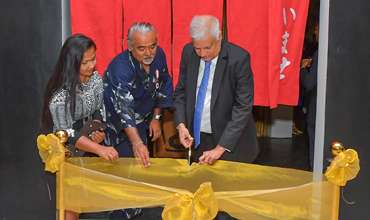
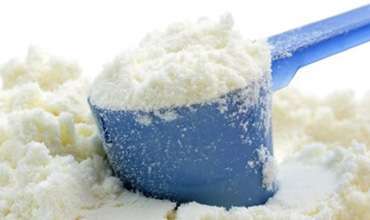
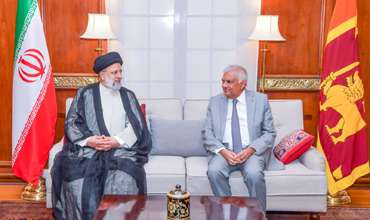
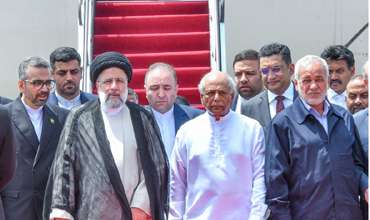




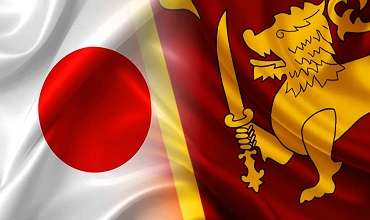
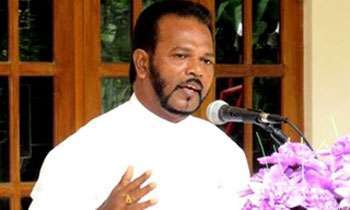

Leave Comments